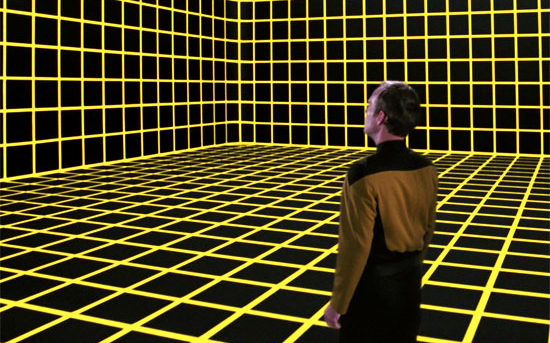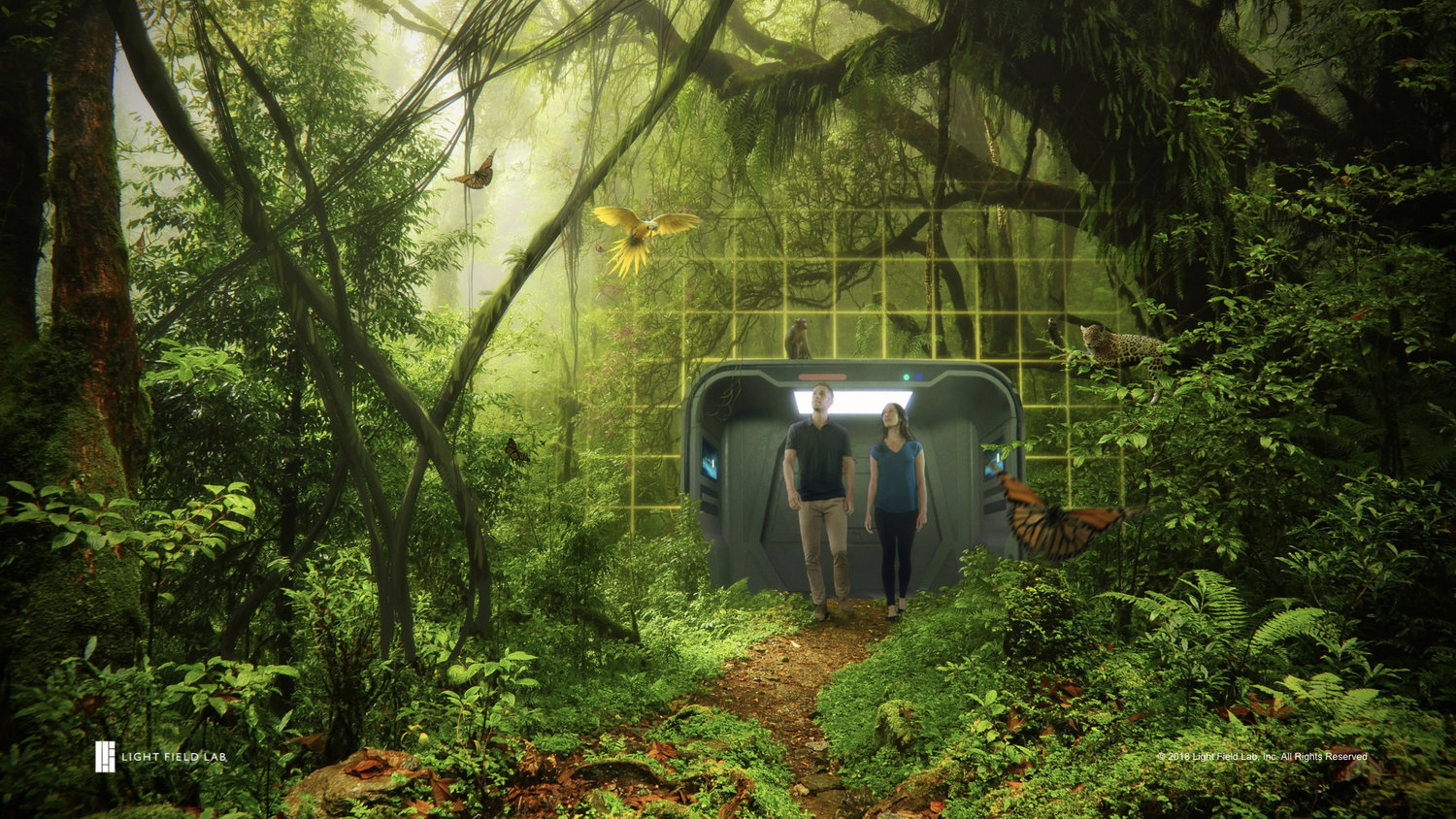Light Field Lab promises the next generation of AR/VR with their headgear-free holographic system.
San Jose holographic display startup Light Field Lab and LA graphics company OTOY, which focuses on cloud-based high-end graphics, have officially announced a partnership that is “making the Star Trek Holodeck a reality” according to a recent press release.
This North-South California alliance will make use of Light Field Lab’s innovative headgear-free holographic system in conjunction with OTOY’s ORBX technology, which is the first no-royalty open-sourced format for this kind of display.
Star Trek‘s concept of a perfectly immersive VR world, sans headset or 3D glasses or any other kind of anchoring technological device, has been the white whale of the immersive entertainment industry since its infancy. This partnership claims to soon have the ability to fully immerse users in the sights and sounds of high-quality media content with no headset.
“We are building what we like to think of as the next generation beyond augmented reality and virtual reality,” said Light Field Lab CEO Jon Karafin at Greenlight Insight’s San Francisco VRS event, according to VB.
Light Field Lab began just last year and has already raised over $7 million towards the project, says The Hollywood Reporter.

Currently, the prototype format consists of holographic display panels that are just 2 feet long. But the creators and investors are confident that this new holographic form of VR visible to the naked eye will soon develop into something like the long-desired ‘Holodeck.’
“Light Field Lab has the potential to change the way we view and interact with media. This is essentially the holy grail of optical display technology, enabling things that seem like science fiction to be possible today,” said Vinod Khosla of Khosla Ventures, which has invested heavily in the project.
This team is not simply creating the VR space for a new step in content immersion; the partnership also came with an agreement from Endeavor and Roddenberry Entertainment to create original content designed specifically for the fledgling technology.
Roddenberry Entertainment was founded in 1967 by Star Trek creator Gene Roddenberry and was originally responsible for the concept of the ‘Holodeck’ in that franchise. Today, the company has created multiple modern Sci-Fi shows and is responsible for the popular reboot series Star Trek: Discovery.

It is currently headed by the late Roddenberry’s son Rod Roddenberry, whose commitment to this ‘Holodeck’- inspired project lend credibility to the idea as compared to numerous attempts to market 3-D or holographic imagery in the past. The younger Roddenberry is excited about the Light Field Lab and OTOY technology. He said in a statement:
“The concept of the Holodeck was extremely important to my father as well as the Star Trek Universe. I want to see Star Trek’s technologies made real, and for the very first time, now believe that a real Holodeck is no longer limited to science fiction.”
According to Light Field Lab, the future of their project includes the potential for holograms that can move around and be manipulated by touch. Former Lucasfilm executive Richard Kerris is currently an adviser to OTOY. Kerris acknowledges that many companies have tried and failed when it comes to the idea of a true high-definition holographic display. He called those attempts mere “gimmicks” in a statement, yet he believes the new Light Field Lab display technology paired with OTOY’s 3D content development truly is making everyone’s ‘Holodeck’ dream a reality.
“The combination of breakthroughs in both rendering and display technologies could very well mark the beginning of a next-gen media revolution. Your eyes freely focus on holographic objects without the need to wear glasses to see the 3D. The experience is unlike anything I’ve experienced and gives me hope on seeing their vision of the Holodeck eventually come true,” Kerris said.
Image Credit: StarTrek.com / Light Field Lab
The post No Headset? A VR Space Like Star Trek’s “Holodeck” May Soon Become Reality appeared first on VRScout.
from VRScout https://ift.tt/2z6s10x
via IFTTT
No comments:
Post a Comment